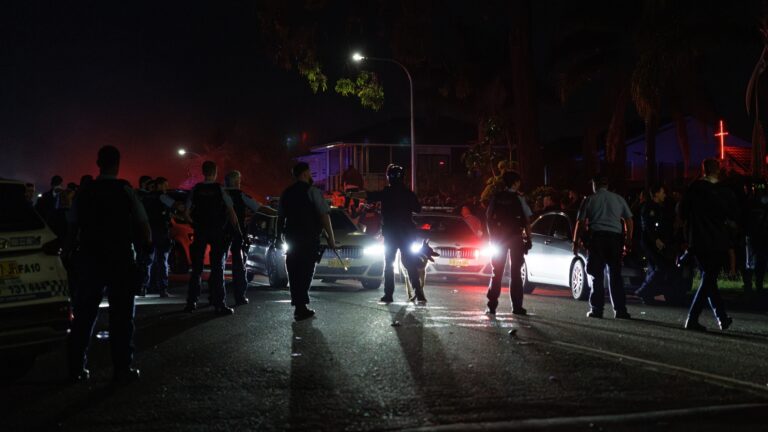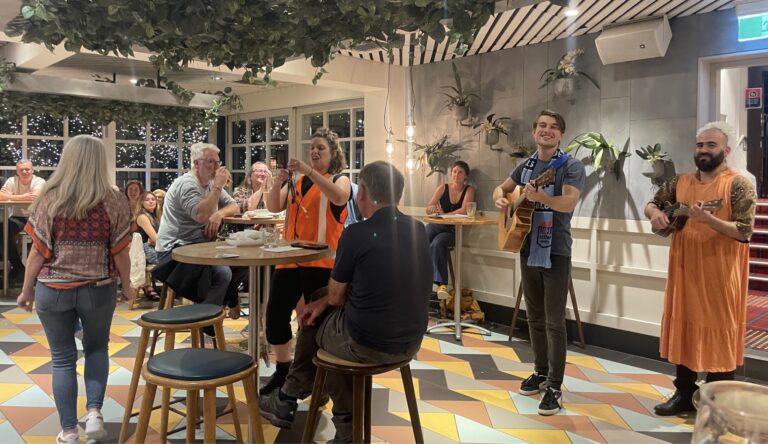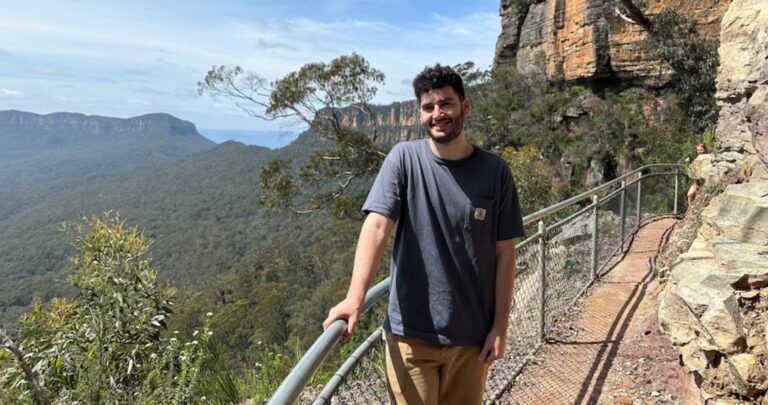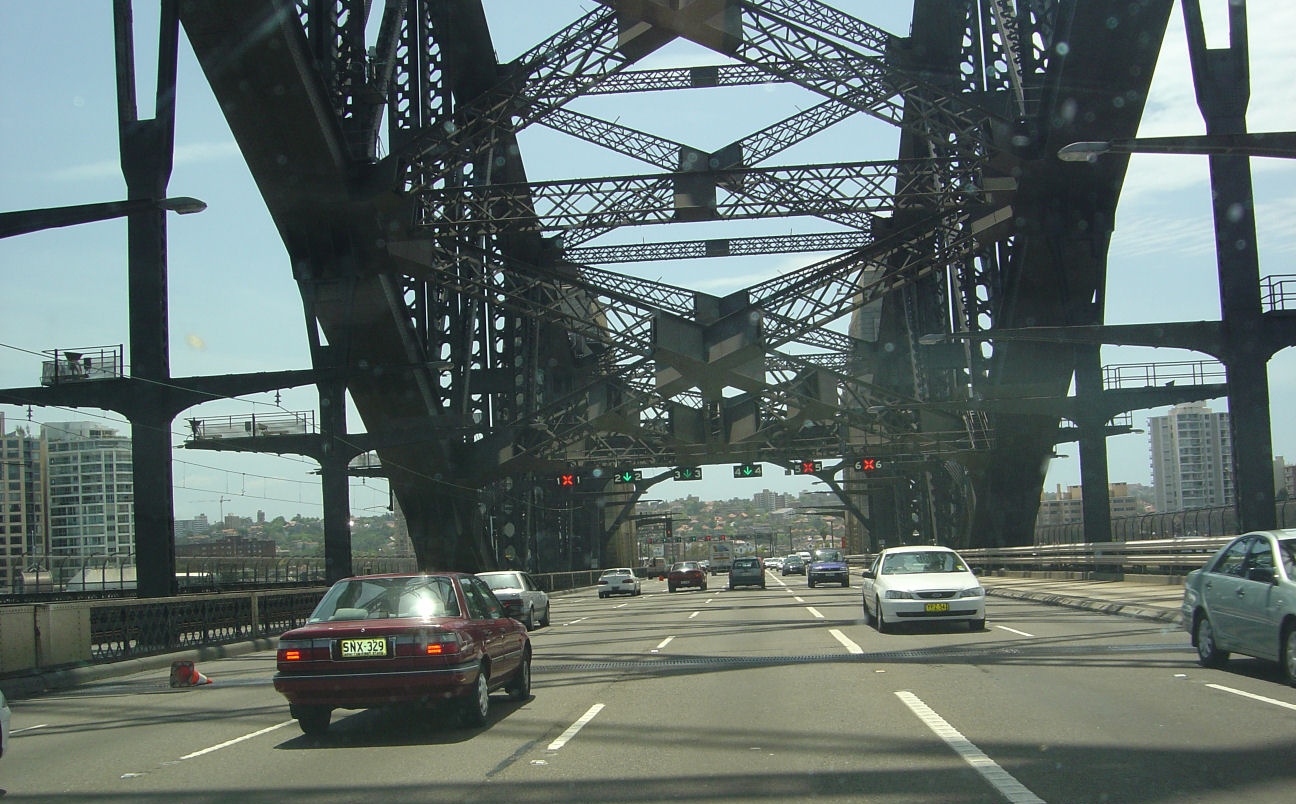
WestConnex could cause endangered frog species to croak it

BY WENDY BACON
A senior research scientist is concerned that the Westconnex motorway could threaten one of only two secure Sydney colonies of the Green and Golden Bell frog at Kogarah Golf course near Sydney’s airport.
The Green and Golden Bell Frog ( GGBF) is endangered in NSW and vulnerable at a national level.
Two breeding ponds to protect the frogs were created near the golf course as a condition of NSW government approval for construction of the the M5 motorway in 1992. The ponds now stand adjacent to the proposed tunnelling site for a second Westconnex M5 and the F6 from the South that will converge near the golf course and destroy most of the frogs’ habitat.
Professor Graham Pyke, a distinguished professor of the School of Environment at the University of Technology Sydney, said that “we have reason to think the (frog population) is still in decline in NSW and may end up being critically endangered “if the Westconnex goes ahead. He said that the chances of the frog population surviving a proposed Westconnex three year tunnelling operation were low.
Professor Pyke was originally involved in the environmental impact study which led to the creation of the only other secure GGBF habitat at Olympic Park in 2000.
He told City Hub that although the GGBF is the most studied and researched frog,”we still don’t know how to properly manage its habitat or conserve it.”
In July, the NSW Roads and Maritime Services (RMS) referred its plans, which will not only threaten the frog colony but also wipe out 80% of critically endangered colony of Cooks River Castlereagh Iron Bark bushland in southern Sydney, to the Federal Department of Environment.
Last week, the Federal department acknowledged that the Westconnex plans will have a ‘significant impact on a matter of national environmental significance’ under the Federal Environment Protection and Biodiversity Conservation Act. But instead of conducting a Federal review, the Department referred the issue back to the NSW Planning Department for assessment during the main Westconnex EIS process which strongly favours the motorway authority. This move was enabled by a bilateral agreement between the NSW and Federal LNP governments signed in February 2015 that allows the Federal government to supplant its own processes with weaker state acts. The agreement was opposed by Labor, the Greens and environmental NGOS.
Coming on the back of the Abbott government’s attack on environmental activists who took successful Federal court action against the massive Queensland Adani coal mine, the decision highlights the weakening of protection for threatened species resulting from Federal Minister for the Environment Greg Hunt’s desire to wind back the Federal role in favour of state laws that preference developers.
The Westconnex authority have proposed that the frogs would be protected by a 50 metre buffer between the breeding ponds and a massive tunnelling site.
Professor Pyke explained that although the GGBF frog can survive in human created habitats it was erroneous to think that the frog can survive any disturbance or will colonise any habitat that is created for it. “We haven’t been able to get the recipe right,” he said.
Although it was meant to include a comprehensive literature review, the RMS report left out any reference to a major peer reviewed research report of which Professor Pyke was a co-author. The 2008 study found that attempts to move GGBF colonies were much less likely to be successful that previously considered.
The RMS report also failed to mention the intense noise and vibration that will continue for three years at least.
Professor Pyke said that although there were no specific studies done on the impact of extreme noise on the frogs that the issue raised a ‘good question’ and that one would have to say it is likely that ‘extreme noise’ would interfere with the frogs.
The Federal department’s decision will disappoint nearly a 1000 groups and individuals, including scientists, who took advantage of a narrow ten-day consultation period to send the Department submissions opposing Westconnex’s plans. Most argued that the referral report should be rejected on the grounds of its inadequacy.
The Westconnex Action Group ran a campaign assisting people to send submissions. Spokesperson Pauline Lockie was scathing about the quality of the RMS report” which she said failed to “provide any solid data that would ‘justify’ the destruction of critically endangered bushland – or the massive threat WestCONnex poses to the endangered Green and Golden Bell Frogs at Kogarah Golf Club.”
“They couldn’t even provide up-to-date information about the frog colony – so how can the RMS say the frogs will be safe once the WestCONnex bulldozers start destroying key parts of their habitat?”
She accused Minister Hunt of “ignoring his responsibility to protect endangered species from being destroyed by short-sighted, secretive and polluting projects.”
Spokesperson for the Wolli Creek Preservation Society Deb Little said the group, which made a major submission, was “appalled. This is effectively allowing the NSW Gov. to be both the proponent and evaluator of the project, without any proper review. With the Federal Gov. abandoning any responsibility for independent review of what was in fact a very inadequate referral submission, we believe this has simply been a political decision not based on the science.”
Wendy Bacon also made a submission to the Federal Department of Environment which can be found on her blog at wendybacon.com









